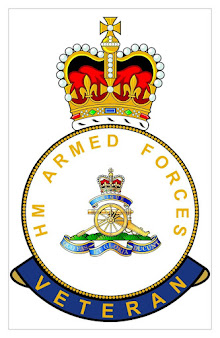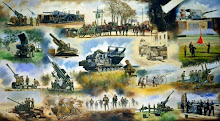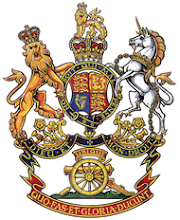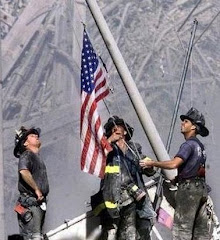The entrance to Waterloo Station features an impressive archway which was built by the London and South Western Railway after the First World War to remember the 585 employees of the railway who lost their lives during the conflict.
 |
| Waterloo Station Victory Arch |
The London and South Western Railway was formed in 1840 and has major routes to the South Coast to Southampton, Portsmouth and Plymouth. It developed routes to the west of London to Hampshire, Surrey, Devon and Cornwall.
 |
| LSWR Bournemouth Express |
The LSWR developed Southampton Docks which became an ocean terminal, a cross channel port and a harbour for ferries to the Isle of Wight. Boat Trains connected Southampton to London Waterloo Station.
 |
| LSWR Southampton Boat Special |
With connections from Waterloo Station to Aldershot and Salisbury Plain, the London station became an important link for troop movements during the Boer War.
 |
3rd Battalion Grenadier Guards
leave Waterloo Station 21st Oct 1899 |
In 1899 the LSWR looked to rebuild and expand the Waterloo Station. The original Waterloo station was opened in 1848. It expanded with ad hoc developments which led to a confusing station with only four approach lines causing significant delays. Construction commenced on new station in 1908 and continued until the outbreak of World War One in August 1914.
During the war Waterloo became a major terminal station for soldiers travelling to and from Southampton en route and returning to the Western Front.
 |
Westminster Fusiliers Waterloo Station
Departing to Western Front August 1914 |
 |
1st Life Guards Waterloo Station
Departing to Western Front August 1914 |
 |
Troops at Waterloo Station
Departing to Western Front |
 |
| Troops at Waterloo Station home on leave |
The First World War ended in November 1918 and in 1919 construction of Waterloo Station resumed. It was decided that the entrance to the station would be a Victory Arch commemorating the 585 employees of the LSWR who lost their lives during the First World War.
The Victory Arch was designed by the LSWR's chief architect Mr JR Scott. It features Britannia and statues depicting war and peace. Inside the arch are panels recording the fallen of the LSWR.
 |
| Waterloo Station Victory Arch Design |
The archway was built from Portland stone and is part of the front of the station that incorporated the LSWR’s offices, a large booking hall and an upstairs dining room.
 |
| Waterloo Station and Victory Arch 2023 |
 |
| Waterloo Station and Victory Arch 1922 |
 |
| Waterloo Station Victory Arch |
On top of the arch is a statue of Britannia holding the torch of liberty  |
Waterloo Station Victory Arch
Britannia holding Torch of Liberty |
The entrance arch bears the name of the station, a clock, a dedication to the fallen and the names of major the theatres of the war.  |
Waterloo Station Victory Arch
Entrance Archway |
The dedication reads "DEDICATED TO THE EMPLOYEES OF THE COMPANY WHO FELL IN THE WAR"
 |
Waterloo Station Victory Arch
Dedication to Employees who fell in the war |
Above the entrance archway are recorded the major theatres of World War One.
BELGIUM | ITALY | DARDENNELLES | FRANCE | MESPOTAMIA | EGYPT | NORTH SEA
Either side of the entrance arch are statues depicting War in 1914 and Peace in 1918.
 |
Waterloo Station Victory Arch
War and Peace |
The statue representing the outbreak of war in 1914 depicts Bellona the Roman goddess of war. |
Waterloo Station Victory Arch
War 1914 - Bellona Roman Goddess of War |
The statue representing peace in 1918 is Athena, the Greek goddess of courage and wisdom. |
Waterloo Station Victory Arch
Athena Greek Goddess of Courage and Wisdom |
Inside the arch way are memorial panels recording the names of the 585 employees who were lost. |
Waterloo Station Victory Arch
Names of the fallen - A to D |
 |
Waterloo Station Victory Arch
Names of the fallen - D to K |
 |
Waterloo Station Victory Arch
Names of the fallen - K to R |
 |
Waterloo Station Victory Arch
Names of the fallen - R to W |
 |
Waterloo Station Victory Arch
Station Exit |
The rebuilt Waterloo station and Victory Arch were opened by Queen Mary on the 21st March 1922.
 |
| Waterloo Station 1922 |
.jpg) |
| Waterloo Station Opening 1922 |
.jpg) |
| Waterloo Station 1922 |
.jpg) |
| Waterloo Station 1922 |
.jpg) |
| Waterloo Station 1922 |
In 1923 the Railways were consolidated into four operating companies, the London and South Western Railway being absorbed into the Southern Railway.
In World War Two Waterloo Station would once again become a major centre for troop movements. It would be used for evacuation of evacuees and was bombed several times during the course of the war.
 |
Waterloo Station World War Two
Soldiers and Evacuees
|
 |
| Waterloo Station at War |
After the Second World War a memorial plaque commemorating the 626 men of the Southern Railway was added to the Victory Arch.
 |
| Waterloo Station at Peace |
In commemoration of the 50th anniversary of D-Day another plaque was added in memory of the Railway employees of the Southern Railway who lost their lives on 6th June 1944.
.JPG)
.JPG)
.JPG)








































.jpg)
.jpg)
.jpg)
















